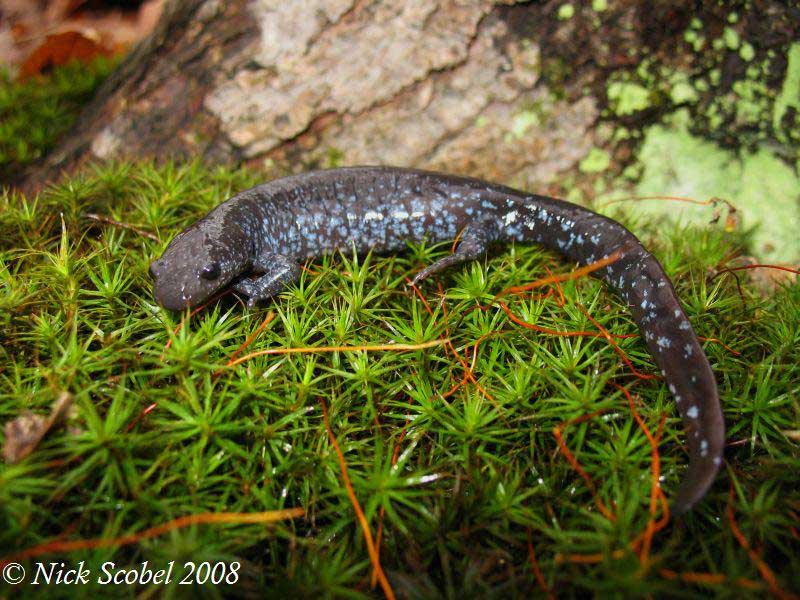
Ambystoma laterale
Natural History
This species often hybridizes with the Jefferson Salamander. It may also hybridize with Small-mouthed and Tiger Salamanders in the Lake Erie area. It is common in woodlands with the required breeding ponds. It is fairly tolerant of human habitat disturbance, and can persist in fragmented and cut-over woods. They live in moist bottomlands to dry uplands, but are most common in moist woodlands with sandy soils. The presence of ponds that retain water into summer is essential. Blue-spotted Salamanders spend much of their time hidden beneath logs, rocks, and leaf litter. Their skin contains granular glands that produce a whitish, toxic substance mainly on the upper surface of the tail.
Reproduction and Growth
One of the first to arrive at breeding ponds, migration occurs in late March or early April. They lay eggs within 2 days of mating. They lay 35 to over 500 eggs - attached to sticks, rocks, leaves, and other submerged objects. Hatching occurs in 3-5 weeks, and transform in late summer. They can transform earlier if pond begins to dry up early. They typically reach sexual maturity in two years.
Conservation
Blue-spotted Salamanders need wooded habitats near fishless ponds and other still, shallow waters. They are tolerant of selective logging and low-density residential development, as long as critical parts of their habitat remain. The major threats are habitat loss and building of roads between breeding sites and terrestrial habitats.
Habitat Type
- Ephemeral wetlands
- Permanent wetlands
- Forests
- Grasslands and savannas
